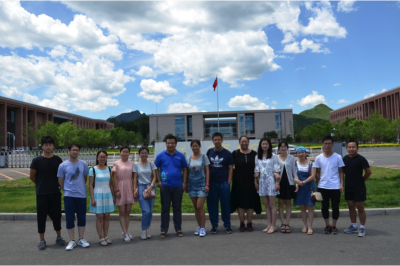By Liang-Jun Yan, Ph.D., University of North Texas Health Science Center
 The University of Chinese Academy of Science (UCAS) was established by the Chinese Academy of Sciences (CAS), and is the largest graduate education institution in China. The College of Life Science (CLS) is devoted to the cultivation of a new generation of scientists while being committed to cutting-edge basic and applied life science research. CLS makes full use of its unique teaching and research strengths and fosters a truth-seeking, innovative, and motivating environment, in which students not only can build a solid foundation of theoretical knowledge and master modern scientific research methods, but more importantly, can develop a global scientific perspective and innovative thinking.
The University of Chinese Academy of Science (UCAS) was established by the Chinese Academy of Sciences (CAS), and is the largest graduate education institution in China. The College of Life Science (CLS) is devoted to the cultivation of a new generation of scientists while being committed to cutting-edge basic and applied life science research. CLS makes full use of its unique teaching and research strengths and fosters a truth-seeking, innovative, and motivating environment, in which students not only can build a solid foundation of theoretical knowledge and master modern scientific research methods, but more importantly, can develop a global scientific perspective and innovative thinking.
Dr. Zhongbing Lu is a professor at CLS, and his major research direction focuses on oxidative stress and nitric oxide (NO) signaling in cardiovascular diseases. His research has attracted many highly competitive research funds from China and yielded high-impact research publications.
Asymmetric dimethylarginine (ADMA), an endogenous inhibitor of nitric oxide synthesis (NOS), is mainly degraded by dimethylarginine dimethylaminohydrolase (DDAH). Elevated plasma ADMA levels and reduced DDAH1 expression/activity have been reported in several cardiovascular diseases, including heart failure, pulmonary hypertension, and atherosclerosis, etc. Dr. Lu has made great efforts to understand the pathological role of ADMA/DDAH in cardiovascular-related diseases. Dr. Lu’s studies have demonstrated that ADMA accumulation contributes to the pathogenesis of Alzheimer's disease (AD) and nonalcoholic fatty liver disease (NAFLD) through promoting O2•− production in neuronal cells and hepatocytes under pathological conditions. More importantly, Dr. Lu’s work indicated that DDAH1 not only acts as an enzyme degrading ADMA but also controls cellular oxidative stress and apoptosis via multiple additional pathways. For example, DDAH1 deficiency significantly enhanced cellular oxidative stress and rendered MEF cells more vulnerable to apoptosis. The mechanism underlying this process was not related to ADMA accumulation, but it was due to miR-21 induction. In addition, DDAH1 deletion directly induces the epithelial to mesenchymal transition in renal proximal tubular epithelial cells via increasing oxidative stress, impairing adenosine monophosphate-activated kinase (AMPK) signaling and downregulating of peroxiredoxin 5 (Prdx5). Therefore, further studies on the ADMA/DDAH1-mediated cellular signaling cascades would explore new therapeutic strategies for many diseases, including AD, NALFD, chronic kidney disease, etc.